Green Bennies. Sounds like a street drug, eh? Well, it’s not! I’ve found a new favorite brunch dish.
I have a longstanding love affair with Eggs Benedict. I love to order them for brunch, and I’m ecstatic if they arrive with perfectly poached eggs and REAL Hollandaise sauce. I’m not overly fussy about what you put under the egg – English muffin, bacon, smoked salmon, spinach are all good. It’s the Hollandaise I love.
Sadly, Hollandaise is NOT on the “eat more often” list. At home, it’s a real challenge to produce a single serving (a solitary egg yolk makes close to half a cup of sauce – too much even for me). Leftovers absolutely cannot be reheated reliably, and I refuse to waste that much butter. I refuse to consider the mix that comes in a packet. Most Sundays I eat my poached eggs naked.
Seeking an alternative, I tried out a recipe I found, using the high school senior students as my guinea pigs. Although the recipe looked good on paper, I was skeptical, but the results were outstanding – easy, tasty, and with great potential for customization. This pale green sauce is less calorific (I think) than classic Hollandaise, contains all heart-healthy ingredients, and has the advantage of being perfectly tasty at room temperature. And it’s vegan, but you won’t notice that, and if you’re eating it on an egg, well…
Vegetarian, then.
Avocados are definitely present on the “eat more often” list. We all know that avocado all by itself is a lovely, creamy addition to any sandwich or salad, and plenty of us have been using it in egg salad to replace mayonnaise. I keep single servings of guacamole in my freezer for healthy snacking. This recipe provides another way to use avocado creatively.
I’m calling the recipe “Green Bennie Sauce”. You could just as easily enjoy it with asparagus or a lovely bit of salmon.
Green Bennie Sauce
Ingredients
- One nice ripe avocado, not too ripe or it won’t have the color you want
- Juice of half a lemon, or about 2 Tbsp, and fresh is definitely better than bottled
- 1/3 cup really hot tap water
- 1/4 cup really good olive oil (here’s a good place to use that $30 bottle)
- Seasoning to taste – classically salt, white pepper, and just a hint of cayenne

Method
Peel your avocado and break it up into chunks. You can use a standard blender, or an immersion (hand-held) blender. A recent survey revealed that more single folks had immersion blenders than actual blenders, although the smoothie crowd had both.
Regardless of your hardware, blend the avocado, lemon juice and hot water until very smooth.
If you’re using a standard blender, drizzle the olive oil through the hole in the top while the motor is running, emulsifying it beautifully into the avocado puree. If you’re using a hand blender, add the oil in about 4 additions (that would be a tablespoon at a time), plunging and blitzing until it’s well emulsified (smooth, thick, and the oil is fully incorporated).
Season to taste. I used about 1/4 tsp Kosher salt, maybe 1/8 tsp black pepper (‘cause I didn’t have white on hand), and an actual pinch of cayenne.
This is a room temperature sauce. I made mine before I did anything else, and I kept it warm–ish in a hot water bath.




You’re probably wondering if the sauce starts to lose it’s good looks pretty quickly, as avocado tends to brown when exposed to air, and you’re right to be concerned. The lemon juice helps slow oxidation in the short run, and I think the incorporation of the olive oil provides some protection as well. My friend, Sharon, added some green onion tops to her sauce which enhanced the color (and flavor) very nicely. When we made the sauce at school, it stayed green and lovely for at least half an hour. I found that pressing plastic wrap onto the surface, just like I do with guacamole, extended the life and lovliness of the sauce, even if I refrigerated it overnight. I froze a bit too, thawed it in the fridge, and was happy with the end result.
Reheating, on the other hand, is a bit tricky. I tried rewarming in the microwave on low power, and promptly boiled my sample. As I suspected, this treatment “broke” the sauce – the emulsion failed and the oil separated from the avocado. Stirring didn’t solve the problem. Also, the olive oil completely overtook the flavor profile.
Now, you can’t put refrigerator–cold sauce on a nice warm poached egg and hope for a good result. I did manage to rewarm some sauce in a metal bowl floating in another bowl of hot tap water, stirring all the time. A bit fussy, but better than a kick in the pants. Unless you’re feeding a crowd, you’re going to have to store the leftovers somehow, and I think freezing in small portions is your best bet.
Leftover sauce can easily be repurposed. It makes excellent salad dressing. I haven’t gone this far yet, but I’ll bet you could make tasty potato salad using this as a mayonnaise substitute – also tuna, salmon, or egg salad. You know I love a good multi–tasker, and this certainly is one. I would eat it out of a bowl with a spoon – it’s that good!
Green Bennies
Toast some bread – could be an English muffin, a bagel, some nice sourdough or grainy brown. or plain old white. Suit yourself.

Wilted spinach is next. You can gussy it up with your favorite things – I used bacon and mushrooms. At school we used smoked salmon. I wilted my spinach in butter, but you could use olive oil, or no oil at all if you use the microwave to wilt it. I heated some butter in a frying pan over medium high heat, added two big handfuls of spinach, and put on the lid. Thirty seconds later, I took off the lid and turned the spinach over to make sure all of it was wilting evenly. The whole process took less than 2 minutes, so the spinach didn’t even have time to shed water, which it will do if you cook it too long.
Pile the wilted spinach on your toast, and pop your plate into a warm (toaster) oven so it’s ready and waiting.




Poach your egg(s). I have written a whole separate treatise on egg poaching (click here), which you can peruse at your leisure if you need it.
While the eggs are poaching, blitz up your sauce – if everything is ready to go, it takes just about the same amount of time to make the sauce as it takes the eggs to cook.


Gently place your poached eggs on the prepared bases, and top with sauce. Eat IMMEDIATELY.




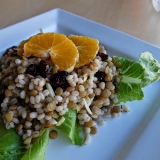
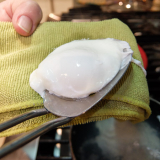
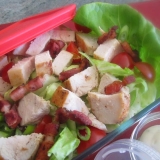

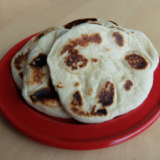

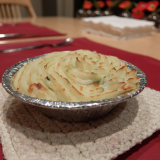

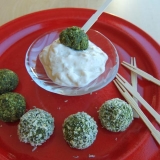

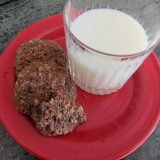


Leave A Comment